poverty

Understanding the Forestry-Poverty Linkages in Rural Communities in Armenia
Rural households in Armenia are heavily reliant on fuelwood to meet their heating and energy needs. In addition to fuelwood, the forest-adjacent population uses the forests for various means, including shelter, fodder for grazing cattle, and a means to access grazing lands and to supplement their income by selling non-timber forest products. Many communities also benefit from ecosystem services provided by Armenia’s forests, including erosion and flood protection.
However, Armenia’s forests, which make up between 6-12% of its total land area, have been in decline since the 1990s. Illegal logging, inadequate forest management and harvesting practices, uncontrolled grazing, fires, and the spread of insects and diseases continue to pose significant challenges. Much of the demand for wood is met through the informal sector, denying revenue that would otherwise have been collected by to the rural communities and by Hayantar, the state forest authority. Illegal logging also contributes to worsening watershed erosion, wood over-harvesting, and biodiversity loss. Unfortunately, current institutional structures are weak and underfunded, and are consequently insufficient for enacting sustainable forest management policies. At the current harvesting rate, with low forest cover, limited replanting, and no change in the direction of forest management, Armenia is facing a declining forest stock.
APPROACH
This activity aims to inform forest sector policies through a survey of rural communities on forest dependence and poverty in Armenia. The study will also contribute to higher-level understanding of linkages between poverty, forest dependence and rural energy use in the context of the World Bank global study being carried out in parallel. This work will build on progress made through the €6 million ENPI Forest Law Enforcement and Governance (FLEG) program by supporting the government, civil society and the private sector in the transition towards sustainable forest management practices across seven countries in the region.
The following activities and outputs are planned:
- Develop a household survey methodology and data collection strategy, in close collaboration with government counterparts including the National Statistical Service and the Ministry of Agriculture.
- Test the household survey methodology and fuelwood value chain analysis to understand (i) how demand for and access to wood and other energy sources have evolved; (ii) the need to develop wood and alternative fuel resources in rural areas; (iii) how trees on farms, plantations, and community-run forest/agro-forest systems could fill this gap; and (iv) dependence on other forest products and ecosystem provisioning services broadly (e.g. berries, mushrooms, etc.).
- Analyze results and prepare a report with recommendations.
- Contribute to global knowledge and methodological development on the linkage between forests, energy use and household wellbeing.
- Disseminate findings among relevant stakeholders and partners.
RESULTS
This project has been completed.
Progress at completion:
- Improved understanding of the relationship between forest use, poverty, and energy in Armenia (final report)
- Systematic, quantitative and repeatable information on the role of sustainable forest management for rural households produced (survey; Forest-SWIFT, a high-frequency tool on forests’ contribution to poverty and livelihoods tested)
At the national level in Armenia, the study’s findings were and will continue to be shared with relevant decision makers in the forestry sector and national Statistics. These findings will be used to inform the development of a future lending operation in the forest sector. At the World Bank, the findings have contributed to the PROFOR-financed work ‘Understanding forests’ contributions to poverty reduction.’
These findings have also been shared with the community of practice of staff working on fuelwood consumption and energy issues in the South Caucasus and broader ECA region
For stories and updates on related activities, follow us on twitter and facebook , or subscribe to our mailing list for regular updates.
Last Updated : 06-16-2024
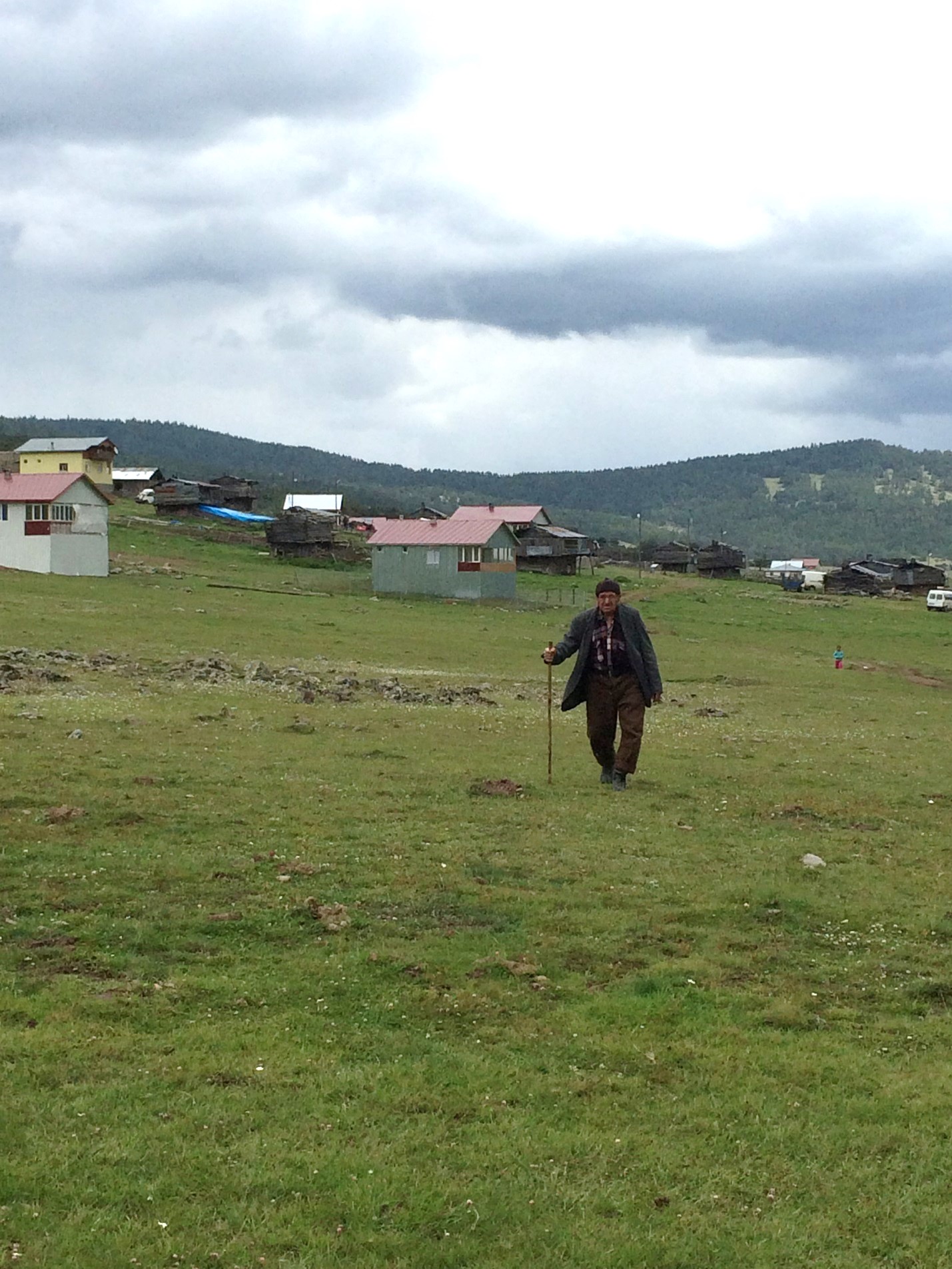
Turkey Forest Villages: Socioeconomic study of forest villagers to better understand the causes of out-migration, forest dependence and poverty
CHALLENGE
In Turkey, forest villagers constitute a significant proportion of the country’s poor and are viewed as an important resource for managing forests. Similarly, forests provide the villagers with an important source of direct employment and a supply of subsistence goods and services. Over the past 35 years, migration to urban areas has reduced the population of forest villages from 18 to 7 million—a level that forest authorities consider critically low to adequately manage upland ecosystems sustainably.
Moreover, many of the migrants were of working age, leaving the work of properly managing the forests and pastures to the remaining population, which now consists of the old and very young. The declining rural populations and the changing demographics of the villages frequently lead to issues such as the overgrazing of livestock near settlements; increased use of fire for managing pastures, with increased risks of uncontrolled burning; ecological changes in the habitat area that may threaten endangered species; and a decline in important forest maintenance activities like tree thinning.
APPROACH
This activity aims to inform forest policy through a survey of forest villagers on forest dependence, poverty, and migration in Turkey. The survey will seek to determine how forest villagers are dependent on forests, pastures, and forest services (such as non-timber forest products) for their income, subsistence, and wellbeing. In addition, the study will investigate whether forests represent a pathway out of poverty (or not), and some of the specific determinants of migration.
RESULTS
Analysis of the surveys revealed the following challenges:
- Poverty rates are high and unequally distributed. The poverty rate in forest villages is approximately 80%, which is more than twice the average rural poverty rate in Turkey. And although a region’s overall poverty rate might be low, it could harbor high-poverty forest villages - an important consideration when designing targeted social protection programs.
- Poorer forest-village households appear to be held back by their high forest-dependency and lack of income diversification. Approximately a quarter of poor households receive income only from forests, compared to 2% of non-poor households. Relatively more prosperous households supplement forest income with income from livestock, agriculture, and pensions. Female participation rates in the labor force are highest among villages with high poverty, suggesting that many women engage in economic activities with low returns.
- Growing out-migration is most prevalent among forest-dependent households, which poses a threat to the current forest management model owing to its reliance on forest village labor supply. Although migration reduces the pressure on forests, the costs of insufficient forest management will be higher in the long run. A model that improves the sustainability of forest-use among villages and directs forest collection and services towards more profitable opportunities will ensure that both communities and forests will thrive.
- Poor households benefit disproportionately from access to productive assets and cash transfers (such as pensions and remittances). Policy simulations reveal that a combination of credit programs and basic income support is the most effective channel for overall poverty reductions and targeting the poor.
With increasing out-migration to cities, women are becoming the main income earners in rural households.
Findings from the surveys were incorporated into the accompanying Forest Policy Note, and informed Turkey's 5-year Strategic Plan on Forests (2017-2012). Specifically, the activity's findings are reflected in the Strategy's priority actions, and fed into a section on interventions that create and scale-up economics opportunities for forest villagers.
A more long-term outcome of this activity is the availability of information for targeting social programs to the poorest households (e.g. households with fewer assets, households with less diversified income, members of forest cooperatives, etc.). For instance, future support to the forest villages should take into account the fact that, with incrasing out-migration to cities, women are becoming the main income-earners in rural households, which could impact the development of income opportunities through forest cooperative activities.
For stories and updates on related activities, follow us on twitter and facebook , or subscribe to our mailing list for regular updates.
Last Updated : 06-16-2024
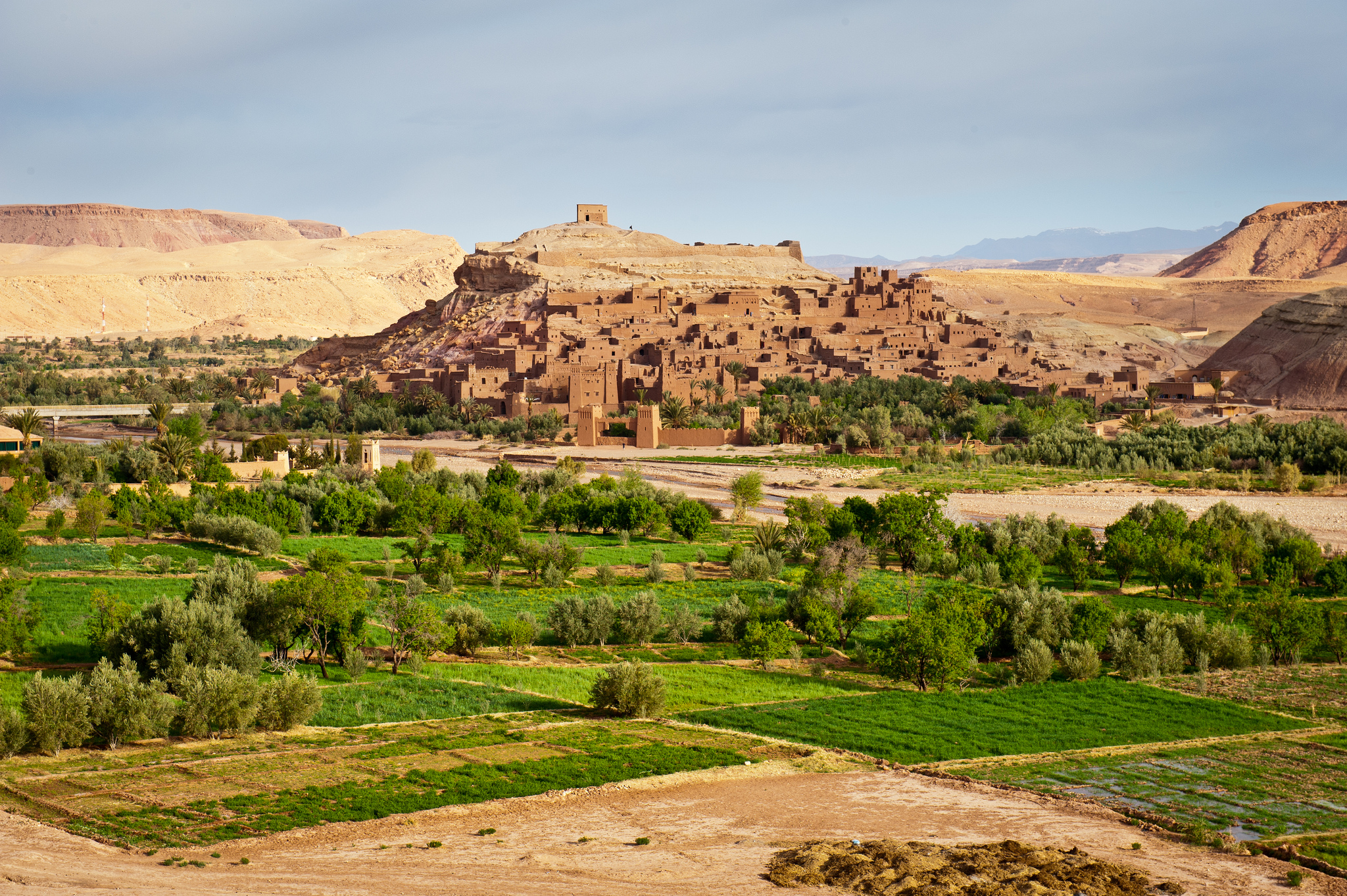
Sustainable landscape management for improved livelihoods in the Middle East and North Africa
Program Summary
This PROFOR activity aims to build the necessary evidence base and rationale for developing a regional and harmonized program on landscape restoration and sustainable management in the arid, semi-arid, and desert areas of sub-Saharan Africa, the Maghreb, and the Mashreq.
Challenge
In MENA and sub-Saharan African countries, there is a growing awareness of the important social, economic and environmental roles played by forests, rangelands, and oasis landscapes. All of these ecosystems face threats from agricultural expansion and increasing demand for food, fiber, fuel, and minerals, as well as misguided agricultural policies.
There is also growing evidence of significant negative externalities from landscape degradation - including the impacts of climate change, biodiversity loss, air pollution, soil erosion, rural poverty, and migration. These issues are gaining political attention at the global, regional, and national levels, but while several initiatives have been launched to combat landscape degradation and strengthen resilience to climate change, more transformative investment is needed.
Approach
This activity will first review existing literature on the extent, impact, and economic costs of land degradation and desertification over the last couple of decades in MENA and Sub-Saharan African countries.
Subsequently, the team will assess progress made by national and regional restoration programs, and identify the primary barriers to furthering that progress using PROFOR’s PRIME framework. Other land restoration programs will be evaluated for lessons learned and applicability to the targeted regions, including experiences from China (e.g. the Green Wall Initiative) and the United States (e.g. actions taken to combat the Dust Bowl phenomenon).
Based on this analysis, this activity will explore how the World Bank can best leverage its convening power to bring together (and finance) restoration initiatives. An economic feasibility study will be carried out, looking at the potential for a regional program on landscape restoration and sustainable management.
Results
- Sustainable Land Management & Restoration in the MENA Region – Issues, Challenges and Recommendations
- Sand and Dust Storms in the MENA Region – Sources, Costs and Solutions
For stories and updates on related activities, follow us on twitter and facebook , or subscribe to our mailing list for regular updates.
Last Updated : 06-16-2024
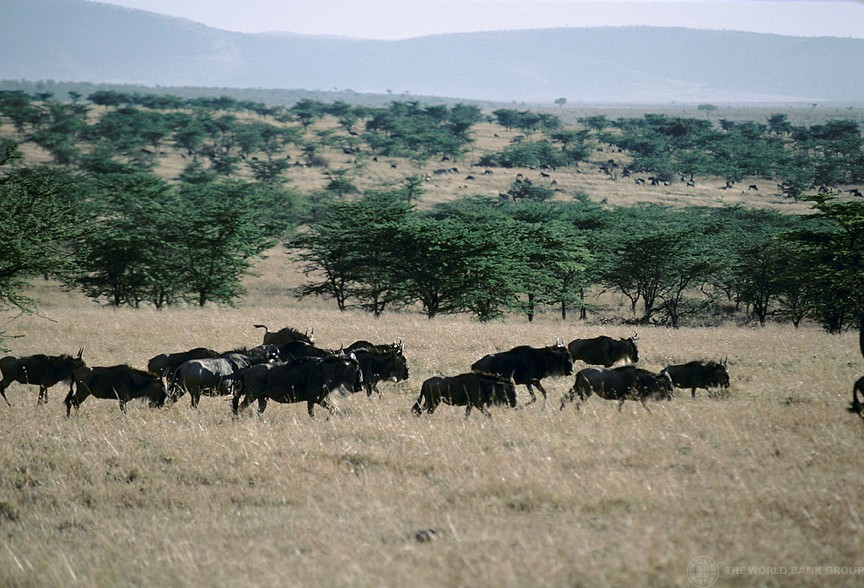
Kenya Tourism and Sustainability
CHALLENGE
Nature-based tourism makes a significant contribution to exports, GDP, jobs, and poverty reduction in Kenya. But habitat loss, overcrowding at key tourist sites, depleting wildlife numbers, and the ever-present threat of terrorism have generated a perfect storm of problems for the sector.
Recent population monitoring shows that long-term declines of many of the charismatic species that attract tourists – including lions, elephants, giraffes, and impalas - are occurring at the same rates within the country's national parks as outside of these protected areas. This is partly because protected areas in Kenya are far too small to be sustainable. As a result, the wildlife depends as much on land adjacent to a protect area as on the protected area itself. Unfortunately, most of this adjacent land is being converted to other non-compatible uses. The implementation of “ecological easements” offer some promising solutions, but the feasibility of this approach depends upon economic incentives, and the opportunity costs of land.
APPROACH
This activity will focus on a critical and often overlooked threat to the survival of the key wildlife tourist attraction: habitat loss and the need to preserve corridors to assure the long-term sustainability of wildlife and mega-fauna.
First, the activity will investigate land related trade-offs. Is there more to be gained from building a tourism product or converting land to agriculture - in terms of GDP, jobs, and poverty impacts? Second, it will conduct a regional analysis in the Mara region to determine the scope for increasing the payoffs from tourism without undermining sustainability. The Mara has been chosen due to the pressures on this globally significant natural asset and its tremendous potential to generate further conservation-related economic benefits. Finally, the study will also identify the benefits and ecological costs of infrastructure throughout Kenya and thus assist in the planning of corridors and preemptive protection of habitats.
RESULTS
This project has been completed. A report titled When Good Conservation Becomes Good Economics was developed and launched in an event held in Nairobi on December 11, 2019, which was very well attended by a wide cross-section of stakeholders and government officials across numerous departments and ministries.
The report findings highlighted for the first time how wildlife loss causes economic loss in Kenya. It tackled the issue of whether there are trade-offs between wildlife and economic growth, especially given the intensifying pressures on land and natural resources. The report also outlined solutions and a way forward for Kenya to find that the balance between economic development without losing a focus on conservation. The evidence presented in this report suggests that there are wide opportunities to stop the dramatic collapse of wildlife populations and that investing in the tourism sector yields significant benefits which are especially pro-poor. The findings identified a set of tools, developed in this report, which can be used by the planners in order to consider the long-term implications of irreversible decisions and harness the full potential that the country’s natural endowment offers. Following the launch of the report, the Government of Kenya submitted a formal request for technical and financial support to advance the dialog on enhancing protection of wildlife habitats and populations within protected areas and outside of the protected areas
The report findings were used to inform the preparation of Kenya SCD and will be used to provide inputs to the CPF (to be prepared this FY as well). The report was immediately recognized by the stakeholders as a useful tool for advancing the dialog on wildlife conservation with the Government and other stakeholders. As of a result of this analytical activity, the Government of Kenya has invited the Bank to help develop a wildlife strategy.
For stories and updates on related activities, follow us on twitter and facebook , or subscribe to our mailing list for regular updates.
Last Updated : 06-16-2024
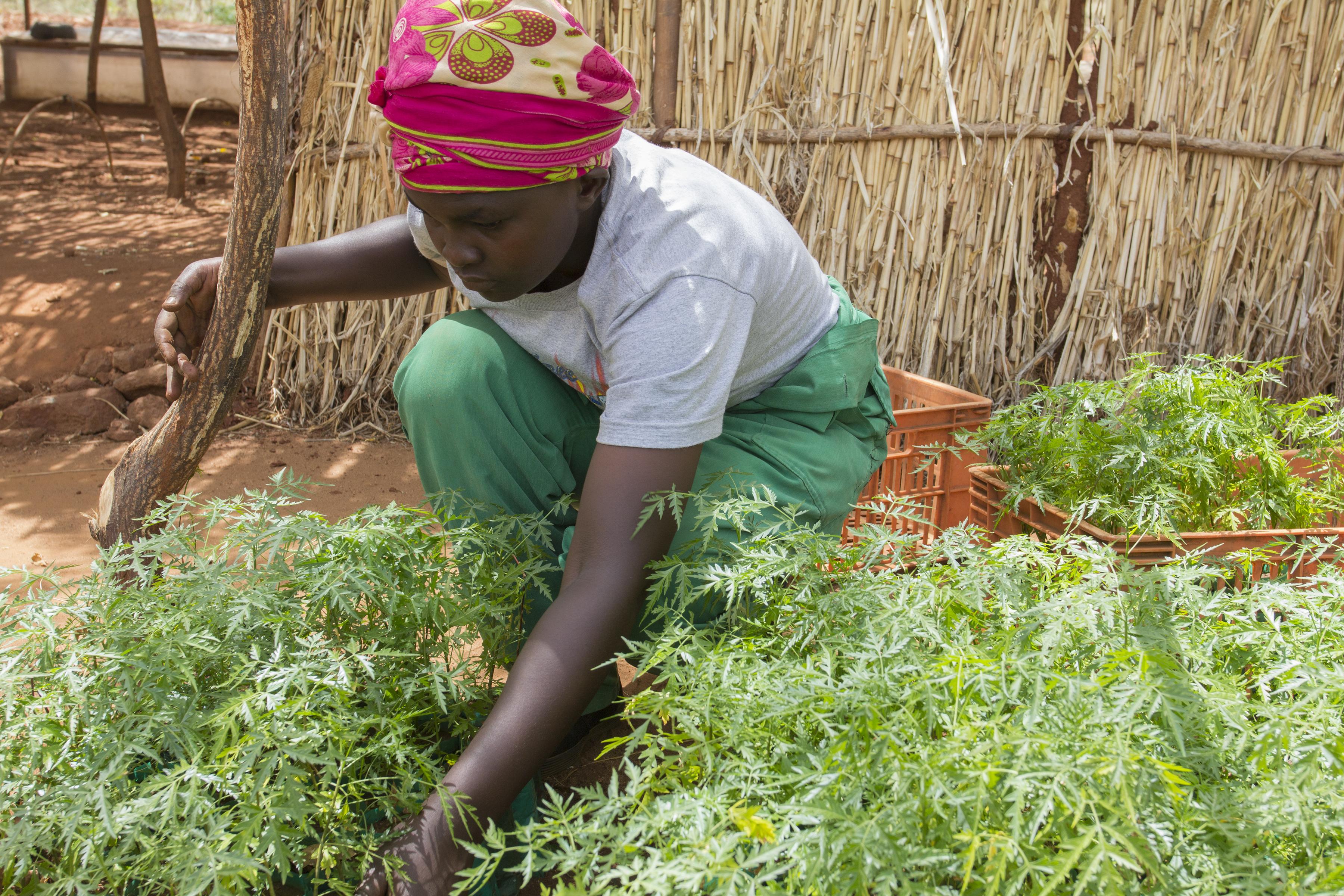
Forest-SWIFT Methodology for High-Frequency Forest-Poverty data collection
CHALLENGE
Around 1.3 billion people – most of them living on less than $1.25 a day - rely on forests for some part of their livelihood. However, detailed, country-specific data is still lacking when it comes to forests’ socio-economic contributions and their role in poverty alleviation. Without this information, forests may be overlooked in national development strategies. This activity aims to contribute to knowledge on forest’s contribution to movements out of poverty by using a new and innovative approach to forest-poverty data collection.
APPROACH
A new tool, Forest-SWIFT (Survey of Wellbeing via Instant and Frequent Tracking) is being developed to collect information to document who the poor are, where they live and how they rely on forests. Forest-SWIFT combines the latest statistical methods with in-person interviews using smart phones or tablets, and also functions offline where mobile coverage or technology is limited. Survey data is collected on a central server, where it can be rapidly accessed, analyzed, and used to design more effective projects or policies.
The tool consists of 10-15 questions to strongly estimate forest reliance, a set of 10-15 questions to strongly estimate poverty, and a set of questions on governance. The tool methodology was developed by (i) modeling income (cash and non-cash) from forest to estimate forest reliance; (ii) modeling consumption/income models to estimate poverty; and (iii) identifying forest governance data. The tool is being field tested in Turkey, Argentina and Mozambique.
Forest-SWIFT can be used to complement the Living Standards Measurement Study (LSMS) Forestry Module. The LSMS Forestry Module is carried out every three years, and Forest-SWIFT can easily be carried out in the interim two years, to create a rich and comprehensive knowledge base on forests and poverty. Forest-SWIFT promises improved monitoring of forest projects, better targeting of beneficiaries of forest interventions, and more effective programs and policies that help to reduce poverty and enhance the economic, social and environmental benefits derived from forests.
RESULTS
This project has been completed. The main outcome of Forest-SWIFT was to equip policymakers with evidence emphasizing how forests are important for the poorest’ welfare and with a robust tool monitor the impacts of their forest interventions on beneficiaries’ welfare. The project emphasized the need for poverty reduction initiatives including more forest and its specificities.
Turkey
Using Forest-SWIFT data collected in 2017, this activity found that poverty in Turkey was 23.2%, which reflects the poverty decline observed in the rest of the country. On average, forest households had more forest income in 2017 than they did in 2016. Forest dependence - as the ratio of forest income on consumption – was found to be 51% for poor households and 32.6% for non-poor households.
Thanks to the model and collected data, Forest-SWIFT work in Turkey highlights the importance of forest resources for households’ livelihoods. Measures of forest income show that households are more dependent on these resources but returns from these activities are low; analysis of this measure of income couldidegu the General Directorate of Forest (GDF) of Turkey on how to increase returns from forest activities. In addition, Turkey has now a reference point on poverty within forests, which could help monitor how projects and interventions affect poverty in these areas.
Using lessons from Forest-SWIFT in Turkey, the activity is informing additional forest projects on how to collect forest income data and work with the poverty team to strongly measure poverty in their projects.
Armenia
In Armenia, Forest-SWIFT has been taken up by the Armenia Statistic Committee. This activity provided poverty rates not only for forest areas but also for the whole country. The data will inform the State Forest Committee on the importance of fuelwood to fulfil energy needs by poor and non-poor households in forest areas, rural and urban areas.
Tunisia
In Tunisia, although the existing data did not allow the use of the SWIFT methodology, the activity found that types of water source, assets, type of dwelling, occupation of household head are correlated to forest income. The data collected can be used to predict consumption and forest income in the future.
Forest-SWIFT continues to promote the need for more detailed data on forest livelihoods to understand poverty in forest areas and to have more robust measure of poverty in investment projects. The Brazil country team has expressed great interest to use Forest-SWIFT to analyse poverty in the Amazon ecoregion.
Thanks to Forest-SWIFT, teams can use a short set of questions to collect poverty and forest income determinants. These determinants are identified in a baseline model (one model for poverty and one model for forest dependence) using a linear regression but controlling for issues linked to over-fitting by using stepwise regressions. Once the determinants have been collected, the team can predict poverty and forest dependence using the betas from each baseline model and multiple imputation regression techniques. This activity consisted of testing a methodology to collect in a short and efficient manner data on poverty and forest dependence. This activity can be embedded in the monitoring and evaluation framework of IPF working on forests.
For stories and updates on related activities, follow us on twitter and facebook , or subscribe to our mailing list for regular updates.
Last Updated : 06-15-2024
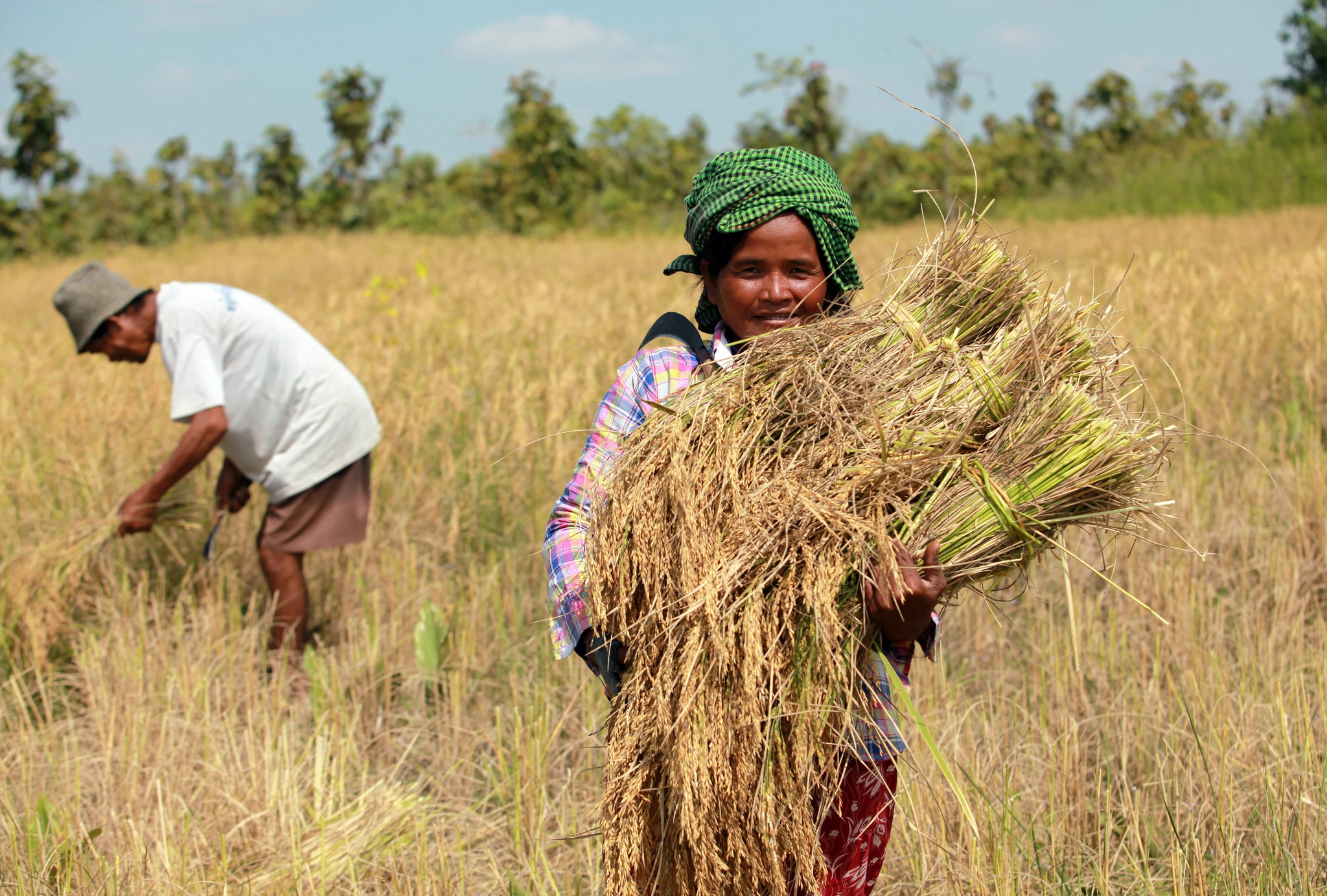
Share
Enhancing Capacity for Livelihoods Development in the Tonlé Sap and Cardamom Mountains Landscape in Cambodia
CHALLENGE
Over the last two decades, Cambodia achieved remarkable economic growth and graduated from a low- to a lower middle-income country. This growth has largely been driven by the country’s rich and diverse natural capital, which supports the livelihoods of millions of Cambodians but is rapidly being degraded from unsustainable use. For instance, agriculture - which is heavily dependent on natural resources and ecosystem services - contributed to 30 percent of GDP in 2015, and the livelihoods of more than five million people. However, according to official estimates, forest cover declined by 21 percent between 2006 and 2014, mainly due to the conversion of forests to agriculture or rubber plantations within economic land concessions.
To counter the rapid decline in forest area, the Royal Government of Cambodia has adopted several policies, strategies and plans to encourage improved forest use and protection. While these changes are positive, many institutional, information and investment challenges remain. In particular, more comprehensive cost-benefit analyses are needed to assess potential investments in sustainable livelihoods and ecosystem services. In addition, implementation of an integrated landscapes approach to forest programming requires strengthening institutional capacities at the national and subnational levels, as well as improving information and decision-support systems.
APPROACH
The key components of this activity will be:
- The development a national forest monitoring system. Efforts will be made to coordinate with complementary efforts by other development partners and NGOs, to bring together maps and data on forestry, land use, biodiversity, ecosystems, water resources, and soil conditions, to effectively inform decision-making at the local levels. Spatial mapping platforms and GIS resources will be used to compile an interface for informing suitable and sustainable livelihoods and projecting impacts from climate change and economic development.
- Carrying out an institutional development needs assessment, at the national and sub-national levels. It will include the identification of implementation needs for operationalizing the government’s new “corridors approach” for the integrated management of forest landscapes, as well as for anticipated reforms to the environmental code and the framework on the co-management of forests and natural resources.
- Undertake an options assessment of investments in sustainable livelihoods and natural assets. This will help determine the various livelihoods options that could be implemented to build community resilience, protect natural resource assets, and promote a sustained and green growth pathway in the Tonle Sap watersheds and Cardamom Mountains landscapes. The PROFOR Forest Poverty Toolkit will be applied, building additional layers of detail specific to Cambodia, including through by using key informant interviews and focus group discussions. Based on these findings, policy recommendations will be generated on the way forward for landscape-level planning, programming, and investment typologies.
RESULTS
- Ecosystem services analysis: Time series analysis of trends in forest conversion and forest degradation were developed with spatial analysis of drivers of change; assessment of the erosion and sediment regulation services provided by the forest in the Cardamoms; and assessment of priority areas in the Cardamoms for water regulation were undertaken. Maps of erosion and sediment regulation, and water provisioning ecosystem services were produced. These results were discussed with the government and are being refined with additional observed data on water flow. The analyses are included as a report (sent to PROFOR), and the database of ecosystem service maps will be subsequently developed.
- Stocktaking exercise: Stocktaking was undertaken on land use, non-timber forest product (NTFP) value chains, forest ecosystem services, and ecotourism in the CMTS. The aim of the stocktaking was to review and collate key findings, lessons and recommendations on work that had been done in Cambodia on these four topics. This stocktaking provided inputs for the subsequent ecotourism analysis, and the NTFP value chains analysis. The results of the stocktaking are included in a report that is the final report of the stocktaking activity. Report can be accessed at HERE:
- Ecotourism analysis. Building on the stocktaking analysis on ecotourism in the CMTS, further analysis was undertaken on ecotourism, and the results of these have been developed as five reports which are described below. The results were discussed with the Cambodian government prior to finalization.
- Priority Investments for Ecotourism Development in Cambodian Protected Areas – Report describes investments in skills building, capacity development, infrastructure and services that are needed to develop ecotourism in protected areas. Investments were determined based on stakeholder consultations including provincial governments, community organizations, and Ministries of Environment, Rural Development, and Tourism.
- Ecotourism Development and Management Models in Cambodian Protected Areas – Report provides an overview of ecotourism in Cambodia, providing insight into the history of its development and the major strategies of the Cambodian government to develop ecotourism. The report also includes an assessment of existing models of ecotourism in Cambodia, and recommendations the type of models for ecotourism development in Protected areas for community groups, private sector, joint private and community ventures and PPPs.
- Mapping and prioritizing sites for ecotourism development. Report describes the multicriteria decision analysis process that was used to prioritize sites for ecotourism development.
- Review of the Legal and Regulatory Framework for Ecotourism. Report provides an assessment of the laws and policies supporting ecotourism development in Cambodia and provides recommendation on improvements needed in the legal and regulatory framework.
- Enabling Private Sector Investment in Ecotourism. Report provides an overview of key markets segments for tourism and Cambodia; an assessment of the main challenges for tourism and ecotourism in Cambodia; assessment of the challenges and barriers facing private sector in tourism in Cambodia; and recommendations and preliminary strategy for enabling private sector in ecotourism in Cambodia. The work was developed through desktop research and consultations with private sector.
- NTFP Analysis: Value chain analysis of bamboo, cardamom and rattan were undertaken, and recommendations provided for enhancing these value chains are included in two reports for NTFP Value Chain Analysis. A working paper—Promotion of NTFP Value Chain in the CMTS Landscape was also developed drawing the value chain analysis; available here. Results of the value chain analysis were presented and discussed during meetings with the government in September 2019. Reports are here: “NTFP Value Chain Analysis” Phase II - Value Chain Studies and “NTFP Value Chain Analysis” Phase I - Prioritization of NTFPs
For stories and updates on related activities, follow us on twitter and facebook , or subscribe to our mailing list for regular updates.
Last Updated : 06-15-2024
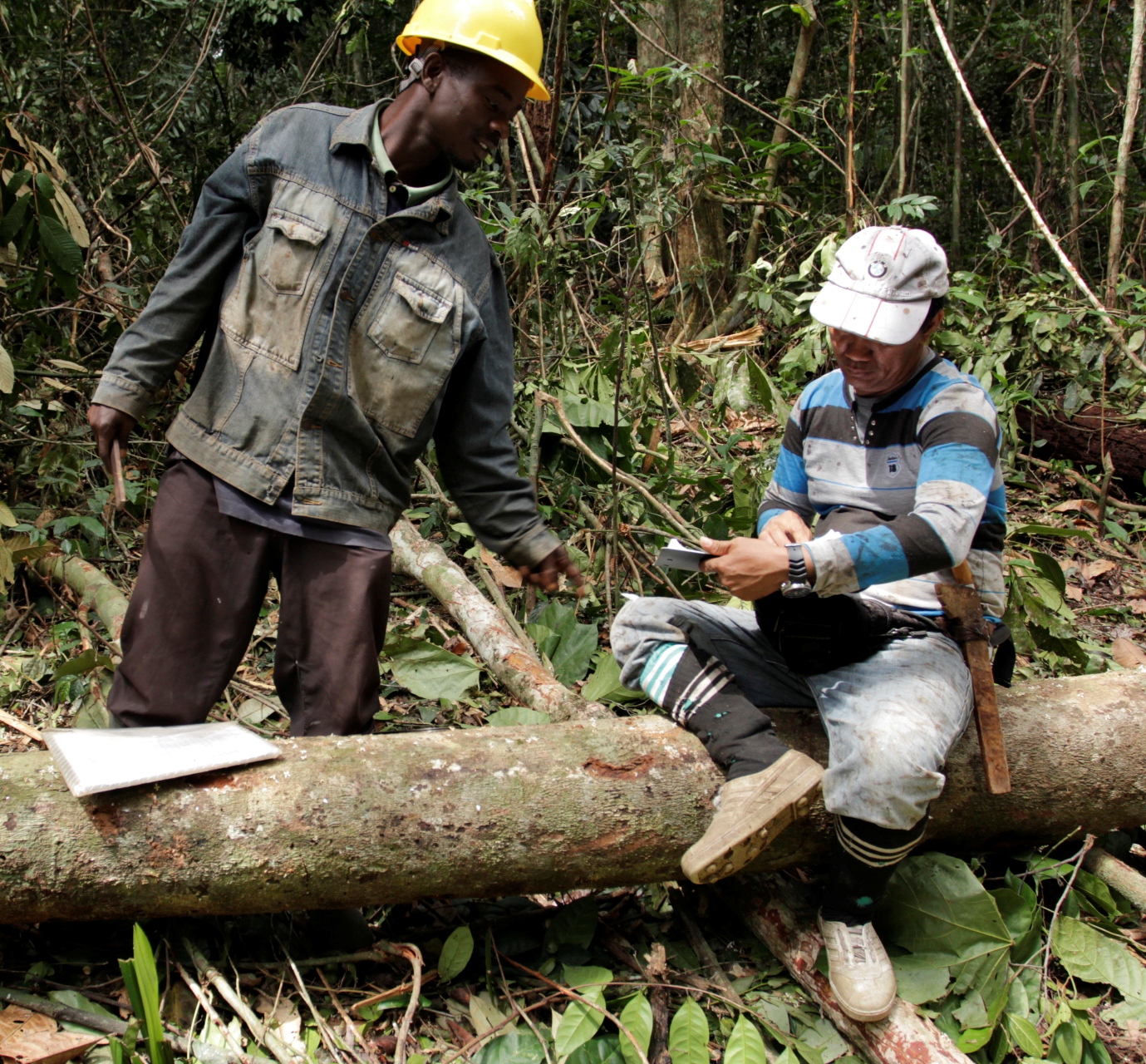
Share
Related Links
Understanding Long-Term Impacts in the Forest Sector: Predictive Proxy Indicators
A Crystal Ball for Forests: Using Today’s Indicators to Predict Tomorrow’s Impacts
Improving the Forests Database to Support Sustainable Forest Management
Assessing and Monitoring Forest Governance
Developing Guidance on Forest Governance Data Collection for Assessment and Monitoring
Impact Analysis of Forest Governance Interventions
Poverty-Forests Linkages Toolkit
Authors/Partners
The World Bank, PROFOR
Developing Proxy Indicators to Assess Forests Sector Impacts
CHALLENGE
The international development community is increasingly demanding better evidence regarding the effectiveness of policies and programs across different sectors, and the forest sector is no exception. Governments and donor agencies explicitly seek to link investment to proven impact. Yet, the evidence base necessary to inform policies and programs in the sector that can successfully enhance the livelihoods of forest-dependent poor populations, foster economic growth, reduce emissions from deforestation and degradation, and conserve forest biodiversity remains weak. There is a particular need to identify robust, yet practical, indicators to track and assess the impacts of forest-related investments.
Any attempt to identify such indicators must grapple with two particular challenges in the forest sector. First, forest-related interventions are usually complex, with forestry policies, programs and projects often including multiple objectives, requiring the integration of socioeconomic and ecological expertise, and entailing processes that unfold over different spatial scales. Second, such interventions often take a long time to show results. For example, the results of investments in thinning, tree stand improvement or natural regeneration under sustainable forest management are unlikely to be evident for 10 to 30 years. These characteristics make attribution of impacts to specific interventions (as opposed to other potential factors) especially difficult within the forest sector.
APPROACH
This activity will build from the extensive evidence accumulated within the World Bank’s forests portfolio, PROFOR activities and other relevant donor-supported initiatives to address these challenges and develop guidance on the identification and use of proxy indicators for project impacts. In so doing, the Activity seeks to increase understanding among policymakers, practitioners and applied researchers of the potential short-term proxy indicators for longer-term impacts of forest sector investments and how they may be used in practice.
The Activity began by undertaking an inventory of indicators used by key actors in the sector and reviewing the available literature on proxy indicators (sometimes referred to as “lead” or “predictive” indicators). An in-depth review of the World Bank portfolio of forest operations under the current Forests Strategy (2002-present) and a relevant subset of the PROFOR portfolio lies at the heart of this Activity. Results will provide the core evidence base for a report on predictive proxy indicators (PPIs) and the conditions in which they are likely to be valid. Through this review, the activity will also analyze potential constraints to the use of indicators in donor-supported forest interventions and suggest ways these constraints might be addressed.
RESULTS
The Working Paper "Understanding Long-Term Impacts in the Forest Sector: Predictive Proxy Indicators" is now available (download at left). The main overall finding is that predictive proxy indicators do appear to exist and can be used in practice. Given the complexity and diversity of the forest sector and novelty of the task, this conclusion was far from a certainty when this research began. The authors identified a range of potential PPIs, several of which have already been used in World Bank forest projects. These PPIs focused primarily at the Project Development Objective (PDO) and Global Environment Objective level, although some intermediate-level indicators were identified.
The report argues that robust PPIs can provide an important ex-ante evaluation tool that enables practitioners and researchers to predict future outcomes and longer-term impacts if certain assumptions hold. To help inform the design and implementation of forestry operations and knowledge, we developed a list of top ranking indicators based on an assessment of their predictive potential and their SMART score. These indicators are presented in an indicator menu organized by major objective (that is, relating to poverty, biodiversity, climate, or governance) and including brief notes on how they might be used. The indicator menu is presented as an annex and represents a key product stemming from this analytical work.
This review did not identify any standalone “silver bullet” predictive proxies, but a major contribution is the idea that multiple indicators, considered together, can have strong predictive potential. The report describes a series of seven indicator clusters that form PPIs.
PPIs are already being integrated into new World Bank projects, such as the Argentina Forests and Community Project. This initiative aims to increase access to markets and basic services by small forest producers, including indigenous people and campesinos, in Argentina’s comparatively poor but forest-rich Northern provinces. Activities will focus on helping communities to develop Sustainable Forest Management (SFM) plans and to strengthen their tenure. To assess effectiveness, the project team will collect data on the three indicators under the Sustainable Forest-Related Income PPI. The project will also be assessed using rigorous impact evaluation methods, making it the first forward-looking test case of how well the forestry PPIs perform as predictors of future outcomes.
For stories and updates on related activities, follow us on twitter and facebook , or subscribe to our mailing list for regular updates.
Author : The World Bank, PROFOR
Last Updated : 06-15-2024
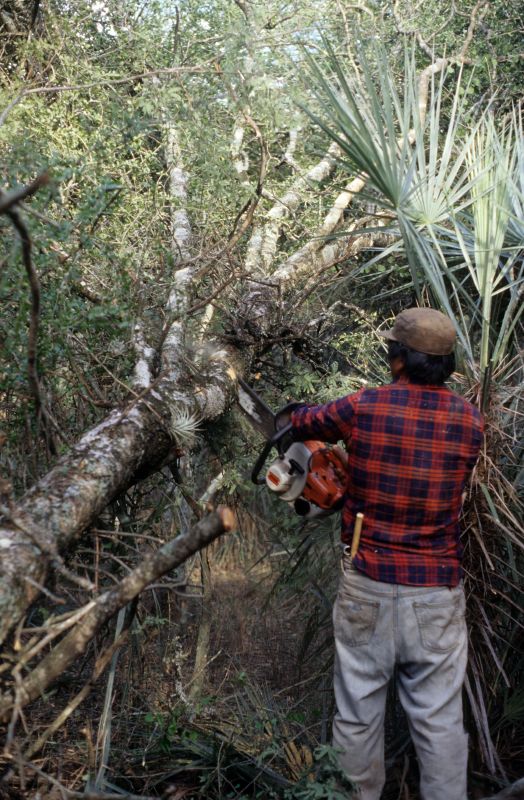
Bringing Forest and Poverty into Focus in Argentina
CHALLENGE
The Chaco Eco-region in northern Argentina includes some of the country’s poorest communities, many of which are dependent on forests for their livelihoods. The Chaco Eco-region also suffers from the highest rates of deforestation in Argentina. Between 2006 and 2011, more than 1.5 million hectares of natural forest were destroyed, with conversion to agriculture and uncontrolled (often illegal) forest exploitation causing deforestation at a rate of 1.2 percent per year. Biodiversity has also been lost, soil and water resources have been degraded, and carbon emissions have increased.
APPROACH
This activity will describe and quantify how the rural poor in the Chaco Eco-region depend on forest-derived income for their livelihoods. Evidence from other countries and contexts shows that similar populations tend to earn 25-35% of their income from the forest. However, no such analysis has been completed in Argentina. This study will seek to answer such questions as: Do forests provide opportunities for poor households to build wealth and a pathway out of poverty? Does dependence on forest resources reflect limited options available to the poor, trapping them in a vicious cycle? How have forest policies impacted deforestation? This activity will also investigate linkages between forest dependence and land tenure, market accessibility, and social inclusion. The primary groups to be surveyed include small and medium-sized forest owners and communities, mainly of indigenous and criollo origin, 70 percent of whom live below the poverty line.
This analysis will fill a critical knowledge gap. The Living Standards Measurement Survey (LSMS) forest module will be used, and the Forest Poverty SWIFT tool will also be piloted to evaluate its utility and efficiency for data collection in the context of forests and poverty linkages.
In addition, this activity will evaluate the impact of the current Forest Fund Program in Argentina, adding new insight into the intervention’s effectiveness in preventing forest loss and land-use change, and providing direction for future improvement. Community-based maps will be produced to strengthen land management and land-tenure within indigenous and criollo communities, and support the monitoring of natural resources in adjacent forest areas.
Key outputs will include:
- A dataset on household characteristics, incomes, and natural resource dependence in the Chaco Eco-region;
- Knowledge products describing the results from the impact evaluation analysis, and from the geospatial and econometric analysis of forest dependence and poverty linkages;
- Community base-maps of land use, natural resources, and land tenure in at least two communities;
- Dissemination activities including a South-South learning and exchange event, a published report, workshops, and BBLs.
RESULTS
- Quantification of natural resource dependence and poverty linkages. An in-depth analysis of the forest dependence of local communities in the Chaco Eco-region, through a mixed methods approach using quantitative and qualitative data collected from the Forests and Community Project beneficiary communities.
- Impact evaluation of Forest Fund: An evaluation of the National Forest Fund impacts on deforestation was performed and presented to national authorities.
- Land use survey and drone mapping: Community-based maps of land use, natural resources, and land tenure developed.
- Findings disseminated: The preliminary econometric analysis exploring forest-poverty linkages in northern Argentina was published as part of Argentina’s Country Environmental Analysis. The results of these analytical products analyzing forest and poverty relationship were presented to staff of the Ministry of Environment and Natural Resources. Findings of the impact evaluation of the Forest Fund have been presented to the National Forest Director. Public dissemination has not been authorized, so far.
- Communications materials: 1 infographic; 3 animated videos, 4 documentary videos and 1 story map.
For stories and updates on related activities, follow us on twitter and facebook , or subscribe to our mailing list for regular updates.
Last Updated : 06-15-2024








